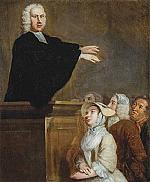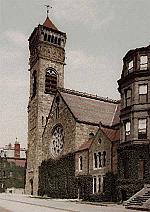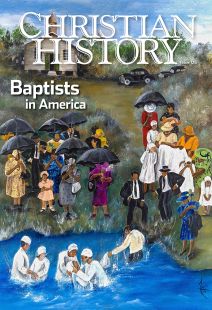Baptists, Did you know?
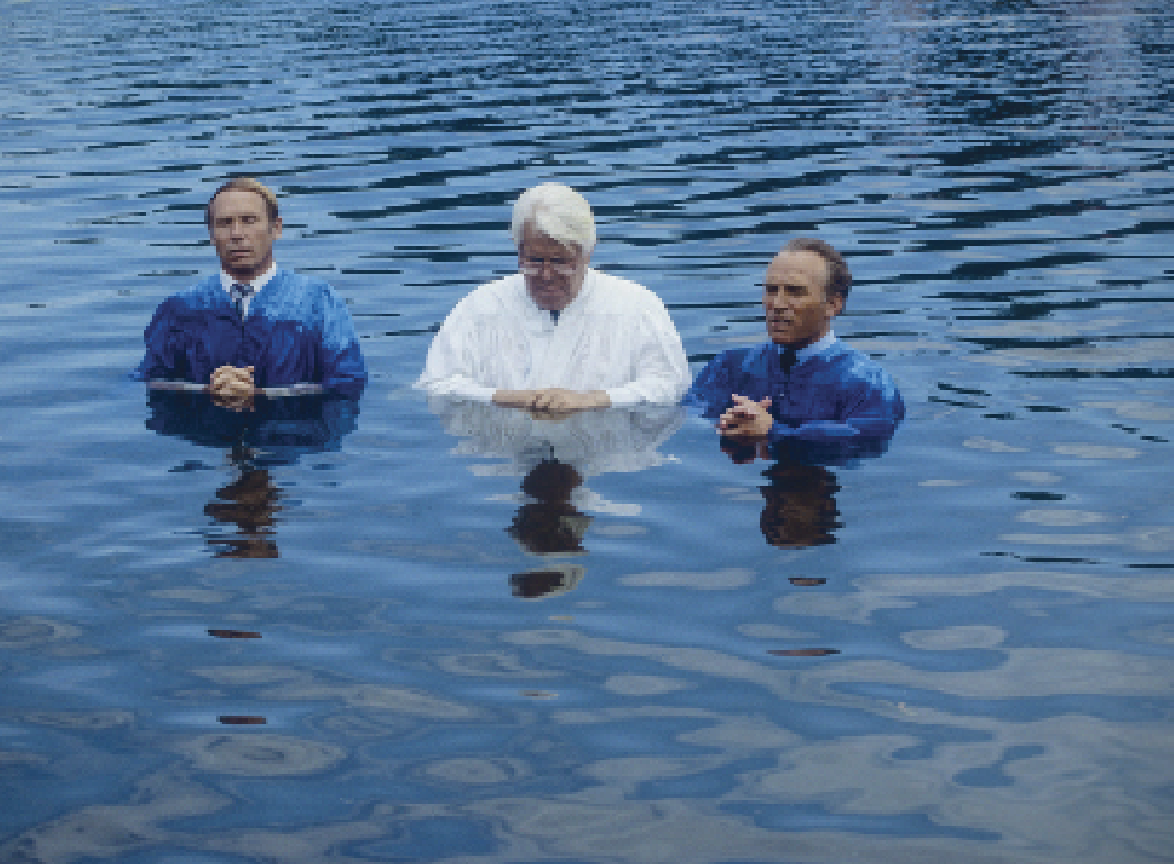
Baptism in Living Water. Doc-Stock Alamy stock photo.
Self-serve baptism
Early Baptist founder John Smyth, originally an Anglican priest, became a Separatist pastor in Holland (“Separatists” wanted to be independent of England’s established Anglican Church). Mennonites in Amsterdam convinced him of the need for believer’s baptism, so he baptized himself and his followers in 1609. Smyth described his group as “Christians Baptized on Profession of Their Faith,” but many shortened that to “se-Baptist” (self-Baptist). “There is good warrant for a man churching himself,” Smyth wrote about his act. “For two men singly are no church; so may two men put baptism upon themselves.” He later rethought the issue and asked the local Mennonite church to baptize him as a Mennonite. They refused, though some of his followers eventually did join the Mennonite Church.
Ivy-covered walls of separation
The first Baptist college, Bristol Baptist College, was founded at Bristol, England, in 1679; it still exists today. Its graduates helped to found Brown University in 1764—the oldest Baptist college in the United States. Baptists were often barred from attending other colonial schools, most of which are members of the Ivy League today. In fact Harvard College president Henry Dunster had been fired in 1654 and his house confiscated because of his Baptist beliefs. Ironically Brown would later join the Ivy League.
I’m your pastor. No, I’m not. Yes, I am.
Elias Keach, the son of a famous London Baptist minister, arrived in Pennsylvania in 1686 in clerical garb though he was not licensed, baptized, or even converted. (Many colonial Americans tried to pass themselves off as clergy, often lying about British credentials, in pursuit of wealth and social status.) Local Baptist immigrants in Pennepack asked Keach to preach for them. But his conscience got the better of him during a sermon; he began weeping and trembling, and admitted that he was a fraud. An Irish Baptist minister led him to conversion and then baptized him. The Pennepack Baptists still needed a minister, and so Keach became the real pastor of the church in 1688.
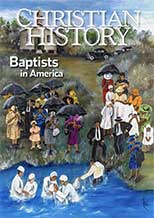
Buy Christian History #126 Baptists in America.
Subscribe to Christian History.
I’ll make a man out of you
Schoolteacher Deborah Sampson joined Third Baptist in Middleborough, Massachusetts, in a 1780 revival. Two years later minutes from a church meeting recorded: “Deborah Sampson, a member of the church who last Spring was accused of dressing in men’s clothes and enlisting as a soldier in the army . . . although she was not convicted, yet was strongly suspected of being guilty, and for some time before behaved very loose and un-Christian like, and at last left our parts in a secret manner.” The church withdrew fellowship from Sampson, who successfully joined the army as “Robert Shurtliff.” She served for 17 months, survived a grievous battle wound, and was honorably discharged in 1783.
The Baptist-Liberian connection
Lott Carey, a Virginia Baptist and a former slave, was the first missionary to Liberia. A century and a half later, Liberian president William Tolbert was elected the first black president of the Baptist World Alliance. He was assassinated in 1982 during a coup.
Fundamentalist frequent-flyer miles
J. Frank Norris, one of the early twentieth century’s most famous Baptist preachers, had an eventful life. The most eventful part was probably his acquittal on a murder charge, but he also grew up with an alcoholic father, had his church burn down twice, broke with the Southern Baptist Convention, helped send John Birch out as a missionary, and pastored First Baptist in Ft. Worth and Temple Baptist in Detroit simultaneously.
Quotable quotes
When Southwestern Baptist Theological Seminary at Baylor University announced in 1908 that it was looking for a new home, Norris helped convince the school to move to Ft. Worth, announcing that it had “found its permanent home until Jesus comes again.” SWBTS’s founder, Benajah Harvey Carroll, was not a man at a loss for words either, according to the Ft. Worth Star-Telegram. When trying to raise funds for the new school, he wrote to one donor, “I’m up a tree. Can you and your fine men help me?” The donor responded, “I’m in a hole. How can a man in a hole help a man up in a tree?”
“When you come up the tree to help me down,” Carroll wrote, “you will be out of your hole.” CH
Thanks to Oxford University Press for allowing us to reprint the stories of Sampson and Keach from Thomas S. Kidd and Barry Hankins, Baptists in America.
By The editor and various contributors.
[Christian History originally published this article in Christian History Issue #126 in 2018]
Next articles
Editor’s note: Baptists in America
Graham’s crusades and King’s struggles are seen as bigger than any one denomination. . . . a lot of Baptist stories are like that.
Jennifer Woodruff TaitWhich Baptist are you again?
What is behind the names of all those Baptist branches?
Elizabeth FlowersSupport us
Christian History Institute (CHI) is a non-profit Pennsylvania corporation founded in 1982. Your donations support the continuation of this ministry
Donate



